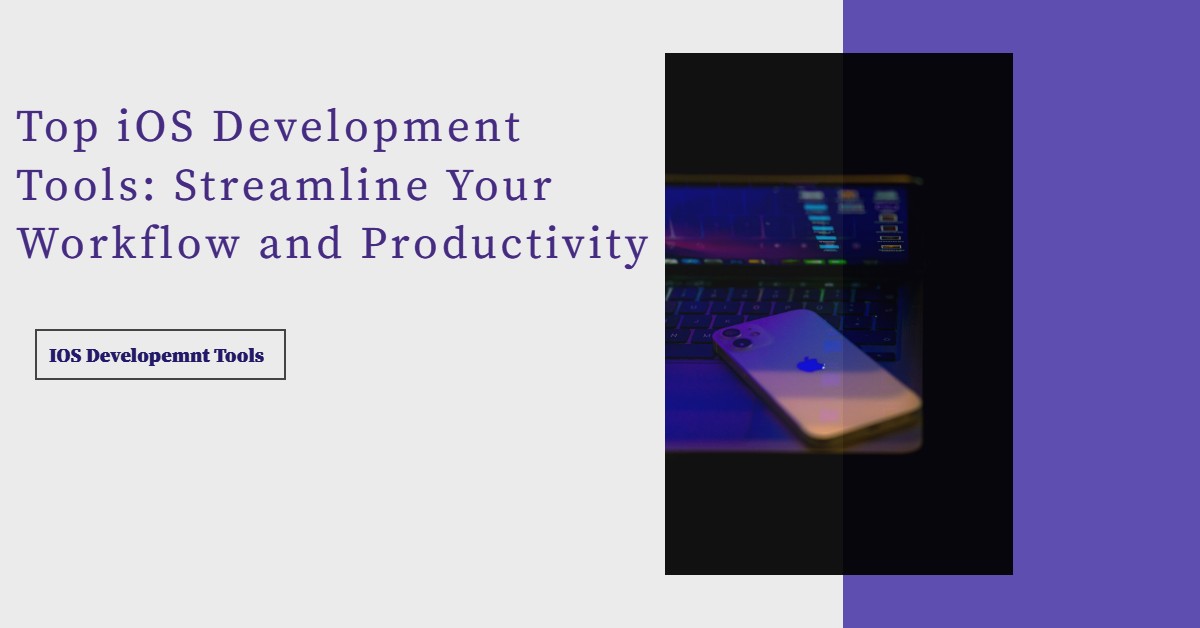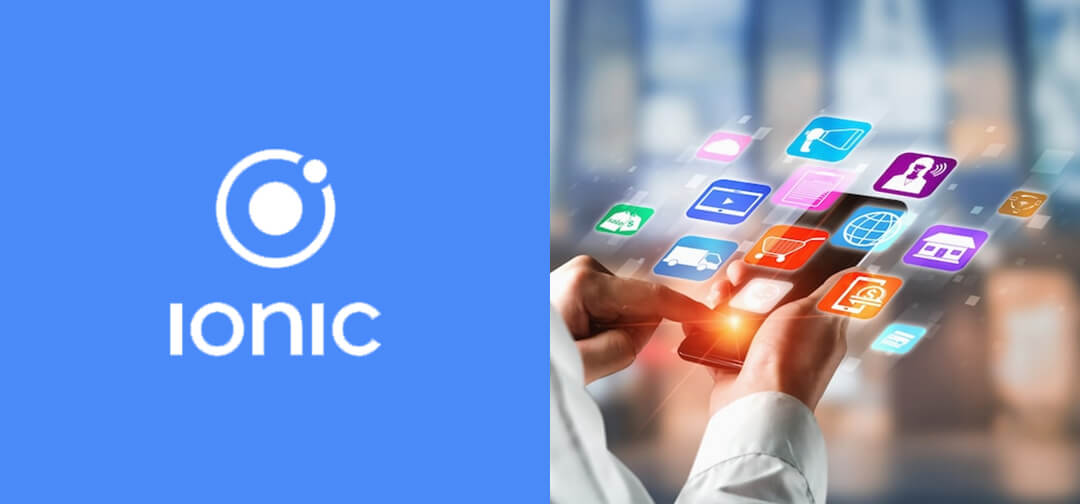
Posted on Monday, Apr 10th, 2023
Top iOS Development Tools: Streamlining Your Workflow and Boosting Productivity
iOS app development is the process of creating applications for devices running Apple's iOS operating system. iOS is used on a variety of Apple devices, including iPhones, iPads, and iPod Touches.
iOS app development involves using Apple's development tools, including Xcode, to write code in languages such as Swift or Objective-C. Developers can use these languages to create user interfaces, connect to data sources, and implement app functionality.
Several Ios Development Tools
iOS app development requires a variety of tools and techniques to create high-quality, user-friendly, and engaging apps. Here are some of the most important tools and techniques for iOS app development:Xcode
Xcode is an integrated development environment (IDE) that is essential for developing iOS apps. It includes a suite of software tools and features, such as an editor, simulator, debugger, and Interface Builder.Swift
Swift is the programming language used to create iOS apps. It is a powerful and efficient language that is easy to learn and use.Cocoa Touch
Cocoa Touch is a framework for building iOS apps. It includes a variety of pre-built user interface elements, such as buttons, text fields, and sliders.User Interface Design
iOS app development requires a strong focus on user interface design. Developers must create intuitive and easy-to-use interfaces that are optimized for touch-based interactions.Apple Developer Program
The Apple Developer Program provides access to a variety of tools and resources for iOS app development. This includes beta software, documentation, and technical support.APIs
APIs (Application Programming Interfaces) are pre-built software modules that can be used to add functionality to iOS apps. There are a variety of APIs available for iOS development, including those for location-based services, social media integration, and in-app purchases.Testing and Debugging
iOS app development requires thorough testing and debugging to ensure that the app is stable and functions as intended. Xcode includes a variety of testing and debugging tools to help developers identify and resolve issues.Continuous Integration and Deployment
Continuous integration and deployment (CI/CD) is a software development process that automates the building, testing, and deployment of iOS apps. This can help to speed up development and ensure that apps are always up-to-date and bug-free.Cloud Services
Cloud services, such as Apple’s iCloud and Google Firebase, can be used to store and manage app data, as well as provide additional functionality, such as push notifications and authentication.Analytics and User Feedback
Analytics and user feedback can be used to gain insight into how users are interacting with iOS apps. This information can be used to make improvements and optimize the app for the best user experience.Various iOS App Development Process
The iOS app development process typically involves the following steps:Idea and Concept: The first step is to come up with an idea and concept for the app. This involves identifying a need or problem that the app will solve and defining the target audience.
Market Research: Conducting market research is important to determine if there is a demand for the app, and to identify competing apps in the market.
Wireframing: Wireframing involves creating a visual representation of the app's user interface, without any design elements. This helps to determine the layout and functionality of the app.
Design: The design phase involves creating the visual elements of the app, including graphics, color schemes, and typography. This is where the app's brand identity is developed.
Development: The development phase involves using programming languages such as Swift and Objective-C to build the app's functionality. This includes coding the user interface, integrating APIs, and creating server-side logic.
Testing: Testing is an important part of the development process to ensure that the app is functioning as expected and is free from bugs and errors. Testing can be done manually or through automated testing tools.
Deployment: Once the app is tested and ready to go, it can be submitted to the App Store for approval. This process can take a few days to a few weeks, depending on the complexity of the app and the quality of the submission.
Maintenance: After the app is deployed, it is important to continue monitoring and updating the app to ensure it remains functional and relevant. This includes fixing any bugs, adding new features, and staying up-to-date with new iOS releases.
The iOS app development process can take several months to a year, depending on the complexity of the app and the resources available. It is important to follow a structured development process to ensure the app is delivered on time and meets the expectations of the users.
Components of an iOS Development Environment
To develop iOS apps, you need to have a specific development environment set up on your computer. Below mentioned are some of them.Mac Computer
iOS development requires a Mac computer running macOS. This is because the Xcode development environment, which is necessary for developing iOS apps, is only available on macOS.Xcode
Xcode is the integrated development environment (IDE) used for developing iOS apps. It includes a suite of software tools and features, such as an editor, simulator, debugger, and Interface Builder.iOS SDK
The iOS software development kit (SDK) includes a set of tools, APIs, and frameworks that are necessary for developing iOS apps. The SDK provides access to the iOS platform and its features.Swift Programming Language
Swift is the programming language used to create iOS apps. It is a powerful and efficient language that is easy to learn and use.iOS Simulator
The iOS Simulator is a tool within Xcode that simulates the behavior of an iOS device on your Mac computer. This allows developers to test their apps on different iOS devices without actually having the physical devices.Provisioning Profiles
Provisioning profiles are necessary for testing and deploying iOS apps. They allow you to run your app on a physical iOS device or submit it to the App Store.Apple Developer Program
The Apple Developer Program provides access to a variety of tools and resources for iOS app development. This includes beta software, documentation, and technical support.Testing Devices
You will need an iOS device like an iPhone or an iPad to test your app, as well as the iOS Simulator which comes with Xcode. Setting up an iOS development environment can be a complex process, but Apple provides detailed documentation and resources to help developers get started. It is important to ensure that your development environment is properly set up to avoid errors and ensure the best possible development experience.Conclusion
iOS development tools have come a long way since the inception of the iOS platform. The availability of powerful tools and frameworks has made it easier than ever to develop iOS applications that are highly functional, efficient, and aesthetically pleasing.By using the right tools, we focus on creating exceptional user experiences and delivering high-quality iOS applications that meet the needs of our users. Explore our range of tools today and take your iOS development to the next level. Refer to Blue Summit’s skill page to know more on the ios development. We also provide a range of services, check out today.
Blue Summit has collaborated with OdiTek Solutions, a frontline custom software development company. It is trusted for its high service quality and delivery consistency. Visit our partner's page today and get your business streamlined.
REFER TO OTHER RELEVANT CONTENTS

Ionic Mobile App Development
Ionic is a totally free and open-source framework that makes it easy to create strong SDKs that are ideal for highly interactive and effective apps. It offers a wide variety of information, tools, and services that facilitate the creation of hybrid apps. The apps may...
read more








